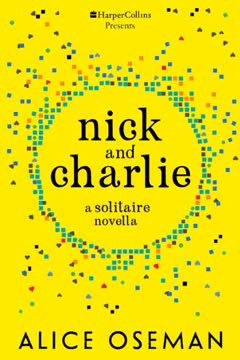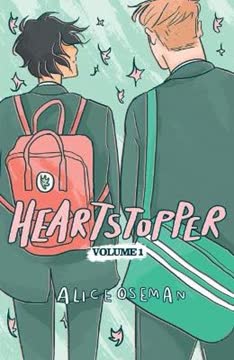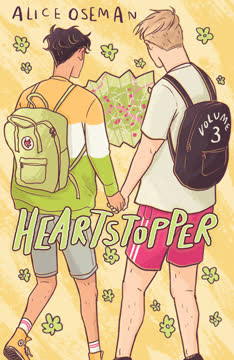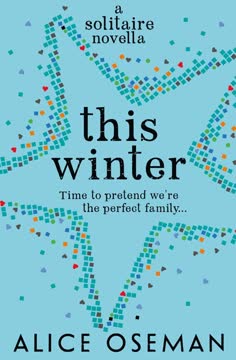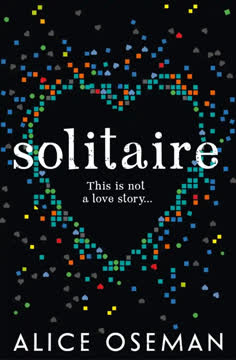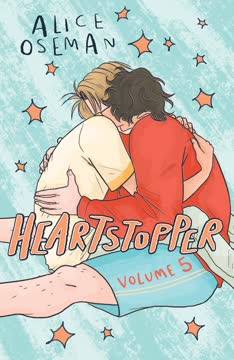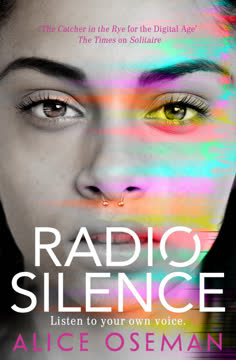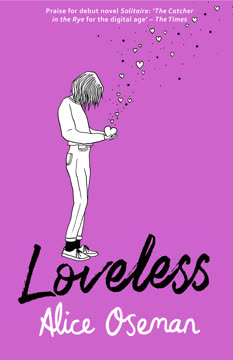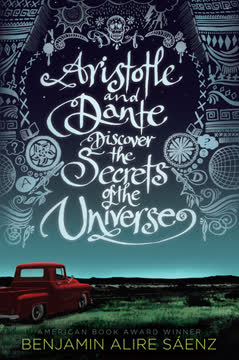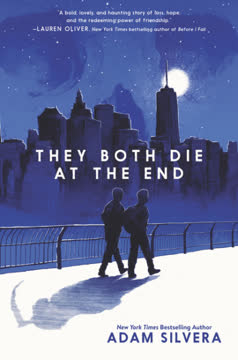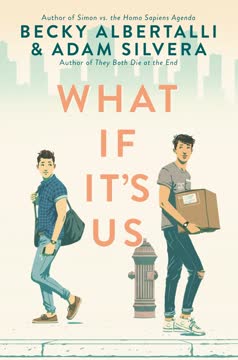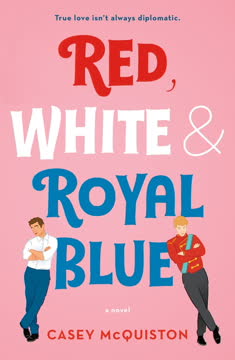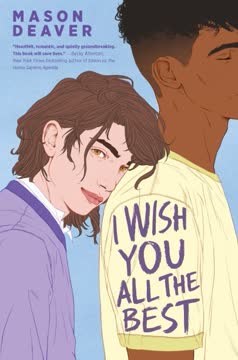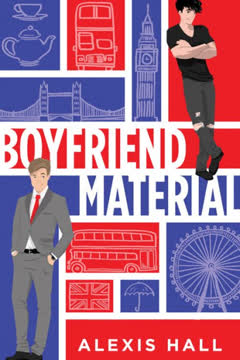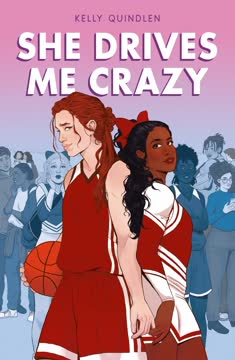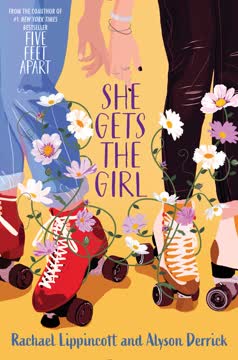Plot Summary
Last Day, Last Dance
Charlie, Head Boy at Truham Grammar, is tasked with reigning in the exuberant Year 13s on their final day, a High School Musical-themed celebration. Amid the chaos, Charlie's boyfriend Nick is among the revelers, and the day is filled with playful banter, costumes, and the bittersweet realization that this is the last time they'll share the same school halls. The couple's easy intimacy is on display, but beneath the surface, Charlie is already feeling the tremors of impending change as Nick prepares to leave for university. The day is a microcosm of their relationship: laughter, inside jokes, and the comfort of routine, all shadowed by the knowledge that everything is about to shift.
Summer Plans and Separation
Nick and Charlie's summer is mapped out with parties, beach trips, and time together, but the looming reality of Nick's departure for university hangs over every plan. Nick is excited for the independence and new experiences, while Charlie, still with a year left at school, feels left behind. Their routines—video games, lazy afternoons, and shared meals—are comforting but also highlight the impending disruption. The couple tries to ignore the future, but the tension simmers, especially for Charlie, who is haunted by the fear of being abandoned and the uncertainty of long-distance love.
Unspoken Fears Surface
Charlie's anxiety grows as Nick's university plans dominate their conversations. Online, Charlie is bombarded with warnings about long-distance relationships, fueling his insecurities. He doesn't want to dampen Nick's excitement, so he bottles up his feelings, leading to a growing emotional distance. Nick, meanwhile, is oblivious to the depth of Charlie's distress, caught up in the logistics and excitement of his next chapter. The couple's inability to communicate their fears sets the stage for misunderstanding and silence.
Party, Panic, and Pain
At a raucous party, Charlie's bottled-up emotions explode. He drinks too much, flirts aggressively, and finally lashes out at Nick, accusing him of wanting to leave and suggesting they break up before university tears them apart. The argument is raw and messy, with both boys saying things they regret. The fight exposes their deepest insecurities: Charlie's fear of abandonment and Nick's frustration at being punished for moving forward. The night ends with them separated, both devastated and unsure if their relationship can survive.
Words Left Unsaid
In the days following the fight, neither Nick nor Charlie reaches out. Each is trapped in their own misery, replaying the argument and wondering if it's truly over. Charlie is paralyzed by guilt and fear, while Nick is numb with shock and sadness. Their friends and family notice the change, but neither boy can articulate what they need. The silence between them grows heavier, and both begin to question whether their love was ever strong enough to withstand real challenges.
The Silence Between
Time drags on as both boys struggle to focus on exams and daily life. The absence of each other is palpable, and the routines that once brought comfort now feel empty. Charlie tries to distract himself with friends and revision, but nothing fills the void. Nick, too, is adrift, unable to find solace in his usual activities. Both are haunted by memories of their time together and the possibility that they've lost something irreplaceable.
Photo Memories, Silent Messages
Charlie finds Nick's disposable camera and develops the photos, discovering a visual diary of their relationship: candid moments, laughter, and quiet intimacy. Realizing how much Nick cherishes their life together, Charlie begins sending him photos—selfies, snapshots, and mementos—hoping to bridge the gap without words. The images are a silent plea for connection, a reminder of what they share. Nick receives the photos but, overwhelmed and uncertain, doesn't respond, deepening Charlie's anxiety.
Reaching Out, Reaching Back
Encouraged by his sister Tori, Charlie decides to make a bold move. He writes a note on the back of a photo and delivers it to Nick's house, inviting him to meet at a local school fete. The gesture is both an apology and an olive branch, a way to say what words have failed to express. Charlie waits anxiously, unsure if Nick will come or if their story has truly ended.
Reunion on the Court
Nick arrives at the fete, and the boys finally talk—really talk—about their fears, mistakes, and hopes. They apologize for the hurtful things said and admit that neither wants to break up. The conversation is awkward, honest, and deeply emotional, but it marks a turning point. They realize that their love is worth fighting for, even if the future is uncertain. The reunion is sealed with laughter, chocolate, and a promise to face what's ahead together.
Promises and Chocolate
The boys reaffirm their commitment with simple acts: sharing chocolate, holding hands, and taking new photos together. These small rituals, once mundane, now carry the weight of forgiveness and renewed trust. They decide to spend the day at the beach, reclaiming their happiness and creating new memories. The ordinary becomes extraordinary in the context of their reconciliation.
Beachside Beginnings Again
At the beach, Nick and Charlie talk, laugh, and simply exist together. The day is filled with familiar comforts—music, games, and the sea—but everything feels new. They discuss their plans for long-distance, acknowledging the challenges but choosing hope over fear. The beach becomes a symbol of their resilience and the possibility of happiness, even in the face of change.
Stronger Than Before
The experience of nearly losing each other has changed Nick and Charlie. Their relationship, once defined by routine and comfort, is now marked by a deeper understanding and a willingness to confront difficult emotions. They talk openly about their fears and dreams, promising to support each other no matter what. The ordeal has made them stronger, more mature, and more certain of their love.
The New Normal
Nick and Charlie settle into a new rhythm, balancing time together with preparations for university and the realities of long-distance. They savor the present, aware that their time is precious. The anxiety that once threatened to pull them apart is replaced by a quiet confidence in their ability to endure. Their love is no longer just a source of comfort but a foundation for growth and resilience.
Love in the Ordinary
The boys realize that their relationship doesn't need grand gestures or constant excitement to be meaningful. The ordinary moments—shared meals, lazy afternoons, and inside jokes—are what make their love real. They embrace their "boring" life, understanding that happiness is found in the small, consistent acts of care and affection.
Facing the Future Together
As summer ends and Nick's departure approaches, the boys face the future with a mixture of fear and hope. They know that long-distance will be hard, but they are determined to make it work. Their story is not one of perfect certainty, but of choosing each other again and again, even when it's difficult. They move forward, not as naïve teenagers, but as partners ready to face whatever comes next—together.
Characters
Charlie Spring
Charlie is the emotional heart of the story, a boy who feels everything intensely and struggles with anxiety, self-doubt, and the lingering effects of past mental health challenges. His relationship with Nick is both his anchor and his greatest vulnerability. Charlie's fear of abandonment and being left behind drives much of the conflict, as he internalizes the idea that he is not enough and that happiness is fleeting. His journey is one of learning to trust—not just Nick, but himself—and to communicate his needs without shame. Charlie's development is marked by increased self-awareness and the courage to be honest, even when it's painful.
Nick Nelson
Nick is the steady presence in Charlie's life, outwardly confident and excited about the future, but inwardly anxious about change and the possibility of losing Charlie. He is caring, attentive, and often more emotionally intelligent than he realizes, but he can be oblivious to the depth of Charlie's fears. Nick's struggle is balancing his own growth and independence with his commitment to Charlie. He learns that excitement for the future doesn't have to mean leaving love behind, and that vulnerability is a strength, not a weakness. Nick's arc is about embracing both change and constancy.
Tao Xu
Tao is Charlie's best friend, known for his eccentric style and fierce loyalty. He provides both support and a mirror for Charlie's anxieties, often voicing what others are afraid to say. Tao's own relationship with Elle serves as a parallel to Nick and Charlie's, highlighting the complexities of young love and the fear of change. Tao's presence grounds Charlie, reminding him that friendship is as vital as romance.
Aled Last
Aled is the gentle, introverted friend who notices what others miss. He is a source of calm and understanding, offering quiet support and honest advice. Aled's own struggles with social anxiety make him particularly attuned to Charlie's emotional state. He encourages open communication and is instrumental in helping Charlie see that he is not alone in his fears.
Victoria Spring (Tori)
Charlie's older sister, Tori, is a voice of reason and dry humor. She sees through Charlie's defenses and pushes him to confront his feelings rather than hide from them. Tori's own struggles with cynicism and connection are hinted at, but her love for Charlie is unwavering. She is the catalyst for Charlie's decision to reach out to Nick, embodying the importance of family support.
Harry Greene
Harry is the life of the party, known for his antics and larger-than-life personality. He represents the carefree side of adolescence, but also the bittersweet nature of endings. Harry's presence adds levity to the story, but his graduation also signals the end of an era for Nick and Charlie.
Elle Argent
Elle is Tao's girlfriend, whose decision to end her relationship before university serves as a trigger for Charlie's fears. Elle's desire for a fresh start and her honesty about the challenges of long-distance relationships force the other characters to confront their own assumptions about love and change.
Sai Verma
Sai is Nick's friend, offering a pragmatic perspective on relationships and the future. He challenges Nick's assumptions and encourages him to communicate with Charlie, serving as a sounding board and a source of clarity during moments of confusion.
Oliver Spring
Charlie's younger brother, Oliver, is a symbol of innocence and continuity. His presence reminds Charlie of the importance of family and the enduring nature of love, even as everything else changes.
Mr. Shannon
The head teacher at Truham, Mr. Shannon represents the adult world's expectations and the transition from adolescence to adulthood. His trust in Charlie as Head Boy is both a compliment and a burden, highlighting the pressures young people face as they navigate change.
Plot Devices
Dual Narrative Perspective
The story is told through alternating chapters from Charlie and Nick's perspectives, allowing readers to see both sides of the relationship. This structure highlights the misunderstandings and unspoken fears that drive the conflict, as well as the deep love that connects the boys. The dual narrative creates empathy and tension, making the eventual reconciliation more satisfying.
Symbolism of Photos and Memories
Photos—both digital and physical—serve as a recurring motif, representing the boys' desire to hold onto the present and remember the ordinary moments that define their love. The act of sending and sharing photos becomes a way to communicate when words fail, and the development of the disposable camera's film is a turning point in the story. The photos are both a record of the past and a promise for the future.
Miscommunication and Silence
Much of the tension arises from the boys' inability to articulate their fears and needs. The silence between them is both a source of pain and a necessary space for reflection. The eventual breaking of this silence is what allows healing and growth.
Parallel Relationships
The subplot of Tao and Elle's breakup serves as a catalyst for Charlie's anxiety and a point of comparison for Nick and Charlie's relationship. The different ways couples handle change and separation highlight the uniqueness of Nick and Charlie's bond and the choices they must make.
Everyday Rituals as Anchors
The boys' shared routines—playing games, eating together, watching TV—are not just background details but central to the story's theme. These rituals ground the characters and provide comfort amid uncertainty, emphasizing that love is built in the mundane as much as the dramatic.
Analysis
A modern meditation on love, anxiety, and change, "Nick and Charlie" distills the universal adolescent fear of growing apart into a deeply personal, relatable narrative. Alice Oseman's novella is not just a romance but a study in communication, vulnerability, and the courage it takes to choose love in the face of uncertainty. The story's power lies in its ordinariness: the small rituals, the awkward silences, the everyday acts of care. By focusing on the emotional realities of a long-term teenage relationship, Oseman challenges the myth that young love is fleeting or shallow. Instead, she shows that real intimacy is forged in honesty, forgiveness, and the willingness to grow together—even when the future is unknown. The novella's message is clear: love is not about avoiding pain or change, but about facing them, hand in hand, again and again.
The dual narrative perspective allows readers to fully empathize with both Nick and Charlie, understanding their individual struggles and the depth of their connection. This technique also highlights the miscommunication that drives much of the conflict, showing how easily love can be threatened by unspoken fears and assumptions.
The use of photos and memories as a recurring motif serves multiple purposes. It acts as a bridge between the characters when words fail, provides a tangible link to their shared past, and symbolizes the desire to freeze time in the face of inevitable change. The development of the disposable camera's film becomes a pivotal moment, allowing Charlie to see their relationship through Nick's eyes and sparking the courage to reach out.
Oseman's exploration of parallel relationships, particularly through Tao and Elle's breakup, adds depth to the central romance. It forces Nick and Charlie to confront different possibilities for their own future and highlights the unique strength of their bond.
The emphasis on everyday rituals and ordinary moments is perhaps the novella's most poignant aspect. By finding profound meaning in shared meals, lazy afternoons, and inside jokes, Oseman illustrates that true love is built not on grand gestures but on consistent, small acts of care and understanding.
Ultimately, "Nick and Charlie" is a story about choosing love, not once, but repeatedly, in the face of uncertainty and change. It's a nuanced portrayal of young love that respects the depth of teenage emotions while acknowledging the challenges of growing up and apart. Through Nick and Charlie's journey, Oseman offers a hopeful message: that with honesty, courage, and commitment, love can not only survive change but thrive because of it.
Last updated:
FAQ
Synopsis & Basic Details
What is Nick and Charlie about?
- Navigating Post-School Transition: Nick and Charlie explores the emotional challenges faced by Nick Nelson, a recent high school graduate, and Charlie Spring, his younger boyfriend, as Nick prepares to leave for university. The story delves into Charlie's deep-seated anxieties about being left behind and the strain this places on their two-year relationship.
- Love Against Uncertainty: It's a poignant narrative about a couple confronting the universal fear of change and separation, specifically how a long-distance relationship might impact their established intimacy and daily routines. The novella highlights their struggle to communicate these fears openly, leading to misunderstandings and a significant argument.
- Reconciliation and Growth: Ultimately, the story follows their journey of reconciliation, as they learn to articulate their insecurities, reaffirm their commitment, and find a stronger, more mature foundation for their love, embracing the "boring" yet profound aspects of their shared life.
Why should I read Nick and Charlie?
- Authentic Emotional Depth: Readers should engage with Nick and Charlie for its raw, honest portrayal of adolescent anxiety and the complexities of a long-term relationship facing its first major challenge. It offers a relatable exploration of self-doubt, fear of abandonment, and the courage required to be vulnerable with a partner.
- Insightful Relationship Dynamics: The novella provides a nuanced look at how communication breakdowns can escalate conflict, even between deeply loving individuals, and the profound relief and growth that comes from honest dialogue. It celebrates the quiet, everyday moments that truly define a lasting connection, challenging the notion that young love is inherently fleeting.
- Continuity for Heartstopper Fans: For fans of Alice Oseman's Heartstopper series, this novella offers a crucial continuation of Nick and Charlie's story, providing deeper insights into their post-school life and the evolution of their relationship beyond the initial romance. It addresses common reader questions about their future, offering a satisfying and mature progression of their beloved characters.
What is the background of Nick and Charlie?
- Post-Heartstopper Universe: Nick and Charlie is set within the established universe of Alice Oseman's Heartstopper graphic novels, serving as a direct continuation of Nick and Charlie's relationship after the events of the main series. It builds upon their established history, including Charlie's past struggles with mental health and Nick's journey of self-discovery.
- Cultural Context of Young Adulthood: The story is deeply rooted in the contemporary experience of British teenagers transitioning from secondary school to university, reflecting common anxieties around independence, long-distance relationships, and the pressure to "have a fresh start" at university. The inclusion of social media (Tumblr) highlights external influences and the public gaze on young, queer relationships.
- Intertextual Allusions: The novella subtly weaves in literary and pop culture references, such as the Pride and Prejudice epigraph foreshadowing relationship "danger" and the High School Musical theme contrasting with the characters' real-life emotional complexities. The inclusion of an extract from Oseman's Solitaire also provides a deeper look into Tori Spring's character and her own struggles with cynicism and connection, enriching the broader Osemanverse.
What are the most memorable quotes in Nick and Charlie?
- "You're Nick and Charlie, aren't you?": This recurring phrase, spoken by friends like Tao and Aled, encapsulates the almost mythical status of Nick and Charlie's relationship among their peers. It highlights the external pressure and idealized perception of their bond, which ironically contributes to Charlie's internal struggle and fear of not living up to this "perfect" image, making their eventual, messy reconciliation all the more powerful.
- "I don't want to break up with you, ever.": Spoken by Nick during their reconciliation, this simple yet profound statement cuts through all the previous miscommunication and fear. It signifies a renewed, unwavering commitment, emphasizing that despite the challenges of long-distance and personal anxieties, their love is a conscious, enduring choice they both make.
- "I love you more than anyone, actually.": Nick's quiet confession, followed by Charlie's equally profound "I'm weird too," reveals the deep, unconventional nature of their bond. It acknowledges their unique, intense connection that defies typical teenage relationship norms, transforming their perceived "weirdness" or "boring" life into a source of profound strength and mutual understanding.
What writing style, narrative choices, and literary techniques does Alice Oseman use?
- Intimate Dual Perspective: Oseman employs a first-person dual narrative, alternating between Nick and Charlie's perspectives. This choice immerses the reader directly into each character's internal monologue, revealing their distinct anxieties, unspoken thoughts, and emotional processing, which is crucial for understanding the miscommunication that drives the plot.
- Conversational and Relatable Tone: The writing style is highly conversational, reflecting authentic teenage dialogue and thought patterns, making the characters and their struggles immediately relatable. This is achieved through informal language, internal asides, and a focus on everyday interactions, grounding the emotional drama in a realistic setting.
- Subtle Symbolism and Foreshadowing: Oseman masterfully uses subtle literary techniques, such as pathetic fallacy (the rain at the party mirroring emotional turmoil), recurring motifs (the disposable camera, the "Nick and Charlie" phrase), and foreshadowing (Tumblr messages, Tao and Elle's breakup) to deepen thematic resonance and build tension without heavy-handed exposition.
Hidden Details & Subtle Connections
What are some minor details that add significant meaning?
- Nick's Phone Glitch: The detail that Nick's old phone cannot receive picture messages, causing Charlie's grand gesture of sending photos to appear as "blank texts," is a profound piece of dramatic irony. It highlights how easily communication can fail, even with the best intentions, and literally embodies the "miscommunication and silence" theme, forcing a face-to-face confrontation rather than a digital one.
- Charlie's Oreo Dairy Milk Gift: Charlie buying Nick an Oreo Dairy Milk bar, a specific detail mentioned as Nick's obsession, is more than just a thoughtful gesture. It symbolizes Charlie's deep knowledge of Nick's preferences and his attempt to reconnect through a familiar comfort, representing the return to their "boring" but deeply intimate rituals that define their love.
- Tori's Haircut Story: In the Solitaire extract, Tori's explanation for cutting her hair—a spontaneous act driven by overwhelming anxiety about starting Year 12 and feeling "choked" by her long hair—subtly parallels Charlie's own struggles with mental health and feeling overwhelmed. It reveals a shared family trait of internalizing stress and seeking drastic, sometimes symbolic, ways to cope, adding depth to Tori's protective nature towards Charlie.
What are some subtle foreshadowing and callbacks?
- Pride and Prejudice Epigraph: The opening quote, "I think you are in very great danger of making him as much in love with you as ever," subtly foreshadows the central conflict. It hints at the "danger" not of falling in love, but of the challenges that deep love faces, particularly the fear of loss and the potential for self-sabotage, setting a tone of emotional vulnerability.
- High School Musical Theme: The Year 13's High School Musical theme on their last day serves as a callback to an idealized, simpler vision of high school life. This contrasts sharply with the complex emotional reality Nick and Charlie are navigating, subtly highlighting the gap between youthful fantasy and the impending adult challenges of their relationship.
- "You're Nick and Charlie" Repetition: The recurring phrase "You're Nick and Charlie," used by friends like Tao and Aled, initially serves as a comforting affirmation of their strong bond. However, it subtly foreshadows the pressure this idealization places on them, particularly Charlie, who fears failing to live up to this image, contributing to his self-doubt and the eventual argument.
What are some unexpected character connections?
- Tori and Lucas Ryan's Reconnection: The unexpected reunion between Tori Spring and her childhood best friend, Lucas Ryan, in the Solitaire extract, provides a parallel narrative to Nick and Charlie's relationship. It highlights the theme of enduring connections and the possibility of rekindling past bonds, even after years of separation, reinforcing the idea that some relationships are meant to last.
- Sai Verma as Nick's Emotional Catalyst: Sai, initially appearing as just a friend, becomes a crucial, unexpected connection for Nick. His direct, rational "intervention" and blunt assessment of Nick and Charlie's relationship ("You're the most basic teenage relationship... Have you seen yourselves?") forces Nick to confront his own assumptions and insecurities, acting as a vital external voice that pushes Nick towards reconciliation.
- Harry Greene's Unintentional Role: While often portrayed as boisterous comic relief, Harry Greene's actions, such as pickpocketing Nick's camera and taking candid photos, unintentionally contribute to the plot's resolution. His presence, though seemingly superficial, facilitates the creation of the very "photo memories" that Charlie later uses to initiate their reconciliation, making him an unexpected, albeit indirect, catalyst.
Who are the most significant supporting characters?
- Victoria Spring (Tori): Tori is significant not just as Charlie's protective sister, but as a voice of cynical wisdom and unexpected emotional intelligence. Her directness ("You've had your tantrum time, okay? You're a Year 13 now.") and practical support (driving Charlie to Nick's house) are crucial catalysts for Charlie's decision to act, demonstrating the vital role of family in navigating emotional crises. Her internal world, hinted at in the Solitaire extract, also provides a deeper understanding of her own struggles with connection and apathy.
- Sai Verma: Sai serves as Nick's rational sounding board and an external validator of Nick and Charlie's unique bond. His blunt, yet supportive, assessment of their relationship ("You hang around with each other every single day and somehow haven't wanted to kill each other yet... Trust me, I've played board games with you two.") helps Nick reframe his anxieties and realize the strength of their connection, pushing him towards reconciliation.
- Aled Last: Aled is Charlie's quiet, empathetic confidant who, despite his shyness, offers profound insights. His observation of Charlie's distress ("I feel like you've been really down today.") and his assertion that "you're Nick and Charlie" and that Nick wouldn't "make it difficult for you" if he thought Charlie didn't love him, are pivotal in helping Charlie understand Nick's perspective and motivating him to reach out.
Psychological, Emotional, & Relational Analysis
What are some unspoken motivations of the characters?
- Charlie's Self-Sabotage: Charlie's aggressive flirting and lashing out at the party, culminating in his suggestion to break up, is an unspoken motivation driven by his deep-seated fear of abandonment and past trauma related to his mental health. He subconsciously attempts to control the pain of potential loss by initiating the breakup himself, believing he is "pathetic" and "boring" and that Nick will eventually leave him anyway.
- Nick's Desire for Normalcy: Nick's initial obliviousness to Charlie's distress and his enthusiastic focus on university plans are subtly motivated by a desire for a "normal" transition into adulthood, free from the complexities and anxieties that have sometimes defined his relationship with Charlie. He wants to believe that long-distance will be "fine," perhaps as a way to avoid confronting the emotional weight of separation.
- Tori's Protective Cynicism: Tori's sarcastic and seemingly apathetic demeanor often masks a deep, unspoken motivation to protect herself and those she cares about from emotional pain. Her directness with Charlie, though harsh, is a form of tough love, motivated by a desire to prevent him from spiraling into self-pity and to push him towards action, reflecting her own struggles with vulnerability as explored in Solitaire.
What psychological complexities do the characters exhibit?
- Charlie's Anxiety and Self-Worth: Charlie exhibits significant psychological complexity through his deep-seated anxiety, which manifests as self-deprecating thoughts ("I'm a fucking stupid idiot," "I'm so pathetic") and a fear of being a burden due to his past mental health struggles. His tendency to internalize external pressures (Tumblr messages, Tao and Elle's breakup) and project his insecurities onto Nick reveals a complex interplay of past trauma and present emotional vulnerability.
- Nick's Emotional Suppression and Idealism: Nick, while outwardly supportive, displays a psychological complexity in his tendency to suppress his own anxieties about the future and idealize the ease of their long-distance relationship. His shock and anger during the argument reveal a hidden vulnerability and a struggle to process intense negative emotions, highlighting his journey towards embracing emotional honesty rather than just optimism.
- The Paradox of "Boring" Love: Both Nick and Charlie grapple with the psychological complexity of their "boring" relationship, questioning its validity against societal expectations of exciting teenage romance. Their eventual acceptance and celebration of their quiet, everyday intimacy ("I love our weird, boring life") represents a mature psychological shift, valuing genuine connection over superficial excitement.
What are the major emotional turning points?
- The Party Confrontation: The explosive argument at Harry's party is the primary emotional turning point, where Charlie's bottled-up anxieties about Nick leaving for university finally erupt. This raw, messy confrontation, fueled by alcohol and misinterpretations, forces both characters to confront their deepest fears and the fragility of their unspoken assumptions about their relationship.
- Charlie's Discovery of the Photos: Charlie developing Nick's disposable camera and discovering numerous candid photos of himself marks a crucial emotional turning point. This visual evidence of Nick's quiet affection and desire to preserve their shared moments ("I think he just took them because he wanted to remember what this was like") shatters Charlie's self-deprecating belief that Nick is bored or wants to leave him, empowering him to initiate reconciliation.
- The Honest Conversation at the Fete: The face-to-face conversation at the primary school fete, where Nick and Charlie finally articulate their fears, apologies, and unwavering commitment, is the ultimate emotional turning point. It signifies a shift from passive suffering and miscommunication to active, vulnerable dialogue, laying the groundwork for a stronger, more resilient relationship built on mutual understanding.
How do relationship dynamics evolve?
- From Unspoken Comfort to Confronted Fears: Initially, Nick and Charlie's relationship dynamic is characterized by comfortable, almost telepathic understanding and shared routines. However, as Nick's university departure looms, this dynamic shifts to one burdened by unspoken fears and assumptions, leading to a breakdown in communication and a major argument.
- From Idealized Perception to Realistic Commitment: The relationship evolves from being perceived as an unbreakable, idealized "Nick and Charlie" unit by their friends to a more realistic, yet stronger, bond forged through conflict. They learn that love isn't about avoiding pain or change, but about actively choosing each other and working through difficulties, even when it's messy.
- From Codependency to Interdependent Growth: While their deep connection sometimes borders on codependency (Charlie's fear of being "on his own," Nick's worry about his mum), the conflict forces them to acknowledge their individual anxieties and needs. Their reconciliation marks a shift towards a more interdependent dynamic, where they support each other's growth while maintaining their strong bond, understanding that their love can accommodate individual paths.
Interpretation & Debate
Which parts of the story remain ambiguous or open-ended?
- The Long-Term Success of Long-Distance: While the ending is hopeful and the boys are committed, the story leaves the actual long-term success of their long-distance relationship open-ended. The novella concludes with them embracing the challenge, but the day-to-day realities and potential difficulties of Nick being two hundred miles away are not fully explored, leaving readers to ponder their future resilience.
- Charlie's Ongoing Mental Health Journey: The narrative touches upon Charlie's past struggles with anorexia and his lingering anxieties, but it doesn't fully detail his ongoing mental health journey. While his growth in communication is evident, the story leaves ambiguous the extent to which he will continue to manage his self-doubt and anxiety independently, or how future stressors might impact him.
- Tori's Personal Arc: The inclusion of the Solitaire extract, while enriching Tori's character, leaves her own personal struggles and relationships (particularly with Michael Holden and Lucas Ryan) largely open-ended within the context of Nick and Charlie. Her journey of overcoming cynicism and finding connection is hinted at but not resolved, inviting readers to explore her story further in Solitaire.
What are some debatable, controversial scenes or moments in Nick and Charlie?
- Charlie's Drunken Behavior at the Party: Charlie's actions at Harry's party, including his aggressive flirting, snapping at Nick, and suggesting a breakup while heavily intoxicated, could be seen as a controversial moment. Readers might debate whether his behavior was a justifiable expression of suppressed anxiety or an unfair, self-sabotaging act that placed undue emotional burden on Nick.
- Nick's Initial Reaction and Silence: Nick's immediate anger and subsequent nine-day silence after the argument could be debated. While understandable given Charlie's hurtful words, some might argue whether his withdrawal was a healthy response or if he should have initiated communication sooner, especially knowing Charlie's vulnerabilities.
- The "Nick and Charlie" Idealization: The recurring phrase "You're Nick and Charlie," used by their friends to describe their seemingly perfect relationship, can be a point of debate. While intended as supportive, it highlights the pressure of external idealization, which arguably contributes to Charlie's internal struggle and fear of failure, raising questions about the impact of public perception on private relationships.
Nick and Charlie Ending Explained: How It Ends & What It Means
- Reconciliation and Renewed Commitment: The story culminates in Nick and Charlie's heartfelt reconciliation at the primary school fete, where they finally communicate their fears and apologies openly. They reaffirm their deep love and commitment, choosing to face the challenges of a long-distance relationship together, symbolized by their shared chocolate and new photos.
- Embracing "Boring" Love and Growth: The ending signifies a profound shift in their understanding of love. They move past the initial idealization and the fear of being "boring," realizing that their deep, everyday intimacy is their greatest strength. This acceptance of their unique, quiet bond marks a significant emotional maturity, indicating that their relationship is now stronger and more resilient, built on honesty and mutual understanding.
- Hopeful, Not Naive, Future: While the future of their long-distance relationship remains a challenge, the ending is one of determined hope rather than naive certainty. They acknowledge the difficulties ahead but choose to confront them as a united front, demonstrating that love is an ongoing choice and a continuous process of growth, adaptation, and unwavering support for each other.
Review Summary
Nick and Charlie follows the beloved couple from Heartstopper as they navigate their relationship when Nick prepares for university. Many readers found it cute and emotional, though some felt it lacked the depth of the graphic novels. The novella explores themes of long-distance relationships, communication, and mental health. While some readers appreciated the more realistic portrayal of their relationship, others found Charlie's behavior frustrating. Overall, fans enjoyed revisiting the characters but had mixed feelings about the execution and character development in this format.
Osemanverse Series
Similar Books
Download PDF
Download EPUB
.epub digital book format is ideal for reading ebooks on phones, tablets, and e-readers.
